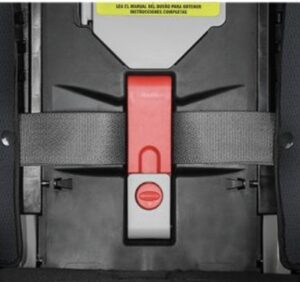In this recurring column, SRN shares vehicle-related information from Katrina Rose, SRN collaborator and vehicle liaison for the LATCH Manual. For this issue, Katrina responds to a question inspired by a flow chart in the 2024 CPST Certification Training technician guide.
Question from the field: In reviewing the new CPST curriculum, I see it now calls for us to check the vehicle owner’s manual to see if it allows the use of lock-offs instead of switching the retractor. Have you seen any vehicle instructions that make reference to either allowing or disallowing the use of a lock-off instead of the retractor?
From Katrina: You are noting the 2024 curriculum’s What Locks a Seat Belt flow chart in Module 8. As in the 2020 curriculum, this flow chart starts in Module 4 by considering the lockability of seat belts, but in the 2024 curriculum, the step of assessing lock-off use was moved to the later module where these CR features are introduced.
Like others we’ve heard from, you are specifically reacting to new boxes at the beginning of the Module 8 chart. Instead of simply starting with whether the CR does or doesn’t have a lock-off, the chart now asks learners to consider scenarios in which the CR has a lock-off and the vehicle manufacturer either does or doesn’t allow it to be used.

So, to answer your question, while SRN has not reviewed every vehicle manual, we have never seen one that addresses CR lock-offs, either permitting or forbidding their use. Certainly, the vast majority of vehicle manuals do not make a statement about lock-offs, which poses a challenge when using the flow chart.
The National CPS Board explains that these scenarios were added to ensure that technician candidates learn the important habit of always checking both the CR and vehicle instructions; even if vehicle manuals don’t currently address this topic, there is nothing to prevent it from appearing in future manuals.
Therefore, SRN recommends that instructors use this point in the CPST training to reinforce the importance of referring to both vehicle and CR instructions, but they should also reassure tech candidates who cannot find this topic addressed in vehicle manuals that this absence is not unusual.
To use the flow chart, it makes sense to assume that, in the absence of a statement to the contrary, the vehicle manufacturer does allow the use of the lock-off, following the CR instructions. After all, lock-offs have been a feature of some CRs in the U.S. for around 30 years, so vehicle safety engineers are aware of them and would have modified their instructions accordingly if they determined they should not be used to lock a seat belt. Also, most vehicle instructions state to use a CR according to the CR maker’s instructions, which implies consent.
Often, though, a trickier job is ascertaining whether a given CR falls under the chart’s No Lock-Off or Lock-Off scenario. Lock-offs and similar, non-lock-off features (like belt guides and tensioners) are common on today’s CRs, so caregivers and CPSTs alike must carefully follow instructions to learn whether a retractor may, must, or must not be locked for any given model. An article from SRN (May/June 2021) that explores this topic and provides practical guidance for CPSTs is posted here.
CPSTs who think a flow chart on this topic would be a useful addition to the next CPST curriculum update—or have any other ideas—can submit their input using the Curriculum Feedback Form at www.cpsboard.org/trainings.
